News of the week August 11, 2023
It’s back to the original as work continues on Hillsboro Lighthouse (FL)
Hillsboro Beach – Nine historically accurate windows were installed at the Hillsboro Lighthouse last week, part of ongoing work to restore areas of the 116-year-old landmark.
The new windows are painted with black frames, likely like the original ones, and made with impact materials. The cost was $39,000.
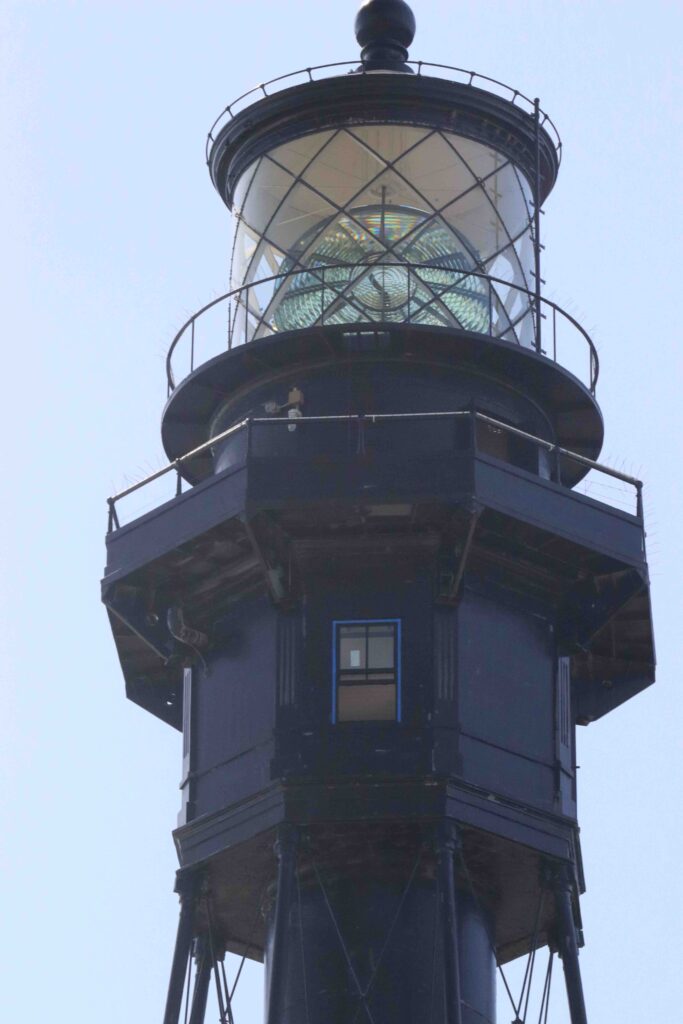
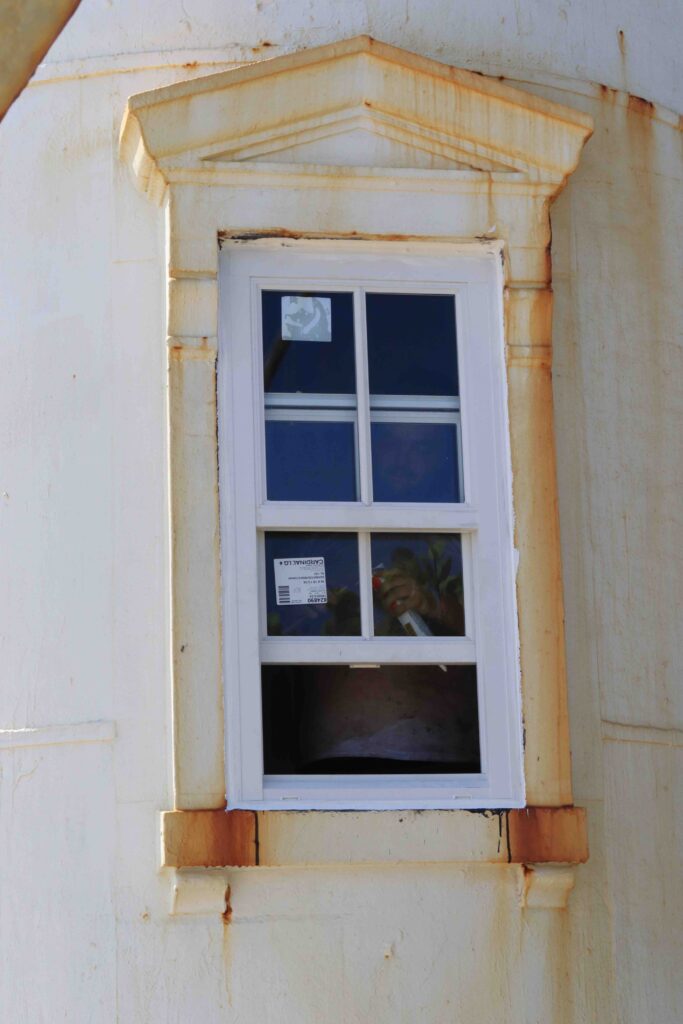
Ed Dietrich, a member of the Hillsboro Lighthouse Preservation Society, is deeply involved in the restoration project. Dietrich said it has required approval from the National Park Service Standards for Historic Places as well as the state and meeting the Florida Building Code to structural standards.
* * *
Officials Celebrate Reopening Of Montauk (NY) Lighthouse After $44M Project
MONTAUK, NY — Elected officials gathered recently to celebrate the completion of a project that will keep the iconic Montauk Lighthouse safe for generations.
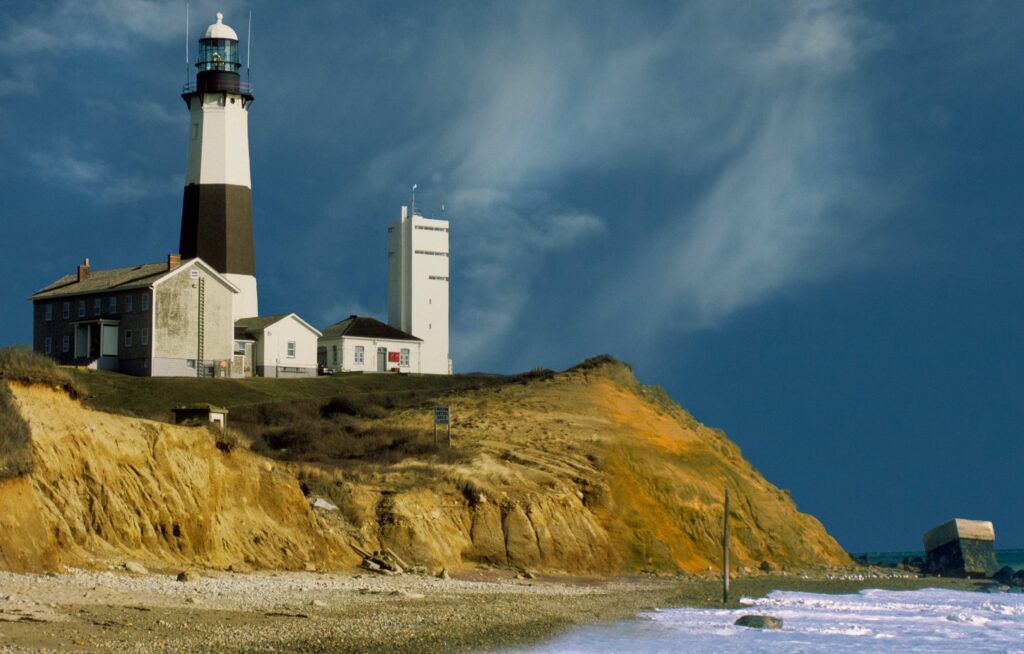
New York State Governor Kathy Hochul, the U.S. Army Corps of Engineers New York District, the Montauk Historical Society, and others celebrated the reopening Wednesday of the newly restored Montauk Point Lighthouse — and the completion of a major coastal resiliency project to protect the historic lighthouse.
* * *
At 150, Yaquina Head Lighthouse stands as a monument to another era on the Oregon coast
When the Yaquina Head Lighthouse was lit for the first time in 1873, its purpose was to let mariners know where they were – a milepost of sorts at sea. Today, thanks to technology, a tower of light is hardly needed to show the way. And yet, Yaquina Head is not only a much loved fixture of the Oregon coast, but a relevant one, both an icon of navigational aid and a monument to another time.
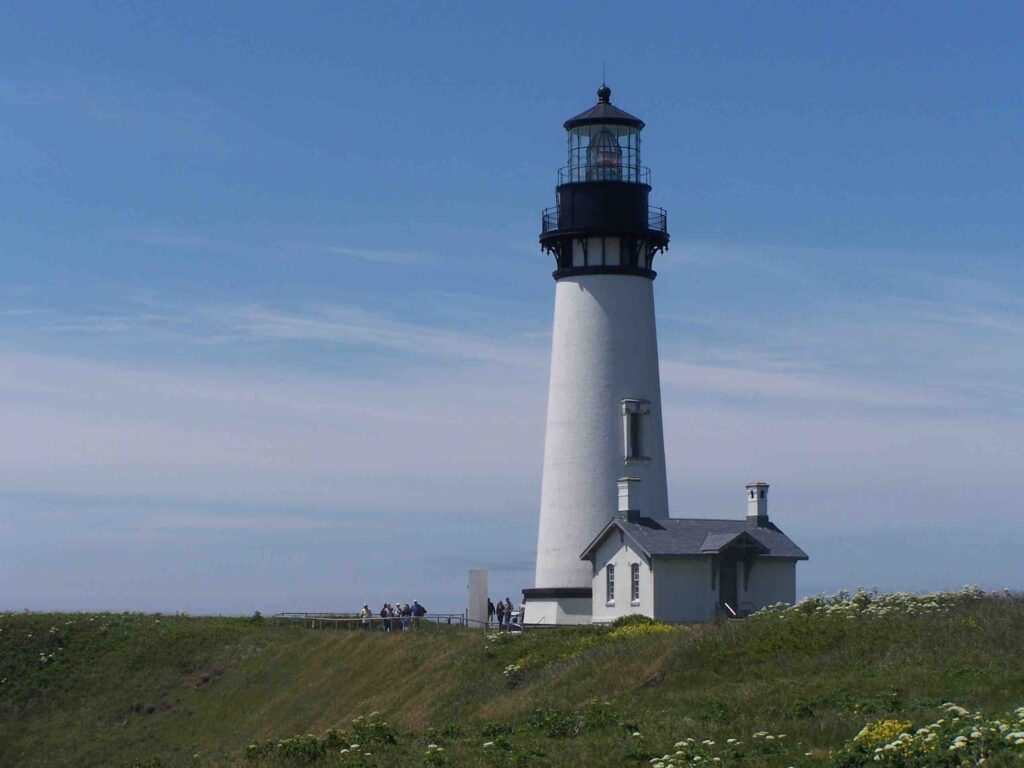
“What were once reference points on the marine highway, are now reference points on the human highway,” said Jay Moeller, chief park ranger at the Yaquina Head Outstanding Natural Area from 2002 to 2021. “It’s like an anchor in time. We can reflect upon how we have personally and as a society navigated changes in technology and cultural values over the past 150 years.”
* * *
Seeing a distant light from Sleeping Bear Dunes? It’s the South Manitou (MI) island lighthouse built in 1871
SOUTH MANITOU ISLAND, MICH. — Next time you’re watching another spectacular summer sunset at Sleeping Bear Dunes National Lakeshore, linger a little after the sun goes down to look for the glow of the park’s South Manitou Island Lighthouse.
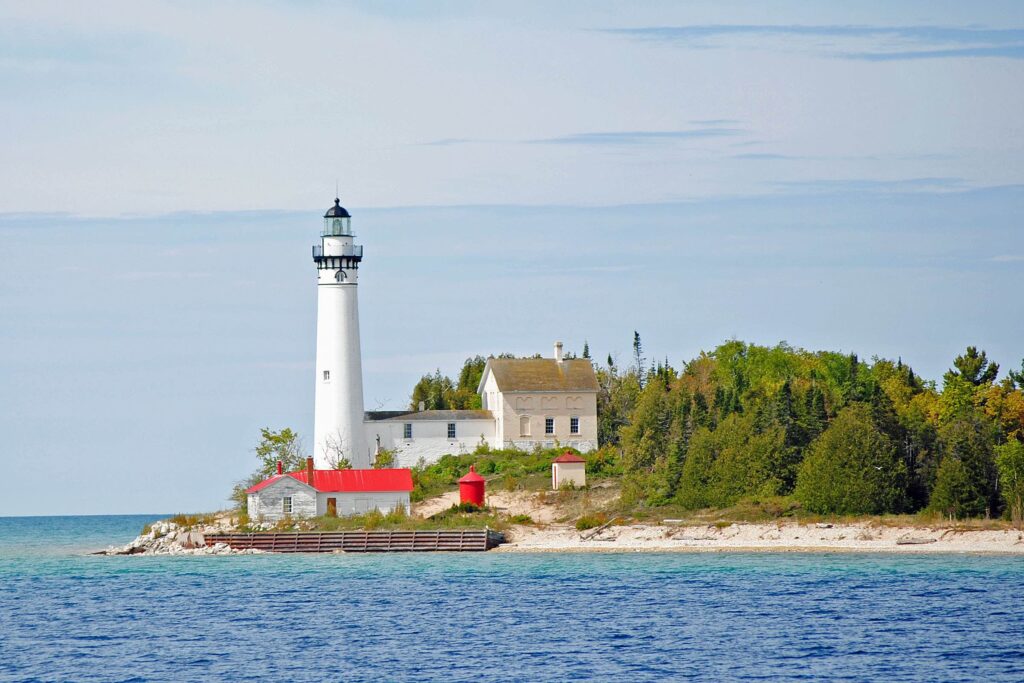
Between Memorial Day and Labor Day, the light from this historic lighthouse shines across Lake Michigan just as it did from its construction in 1879 until its decomissioning in 1958. That light is visible at night from the mainland, and during the day the lighthouse itself can be seen with the unaided eye, or binoculars for a better view, from many of Sleeping Bear’s west-facing beaches, according to a recent post on the park’s Facebook page.
* * *
Great Lakes Lighthouse Keepers (GLLKA) celebrates 40th anniversary Aug. 19
CHEBOYGAN — The 40-year anniversary celebration of the Great Lakes Lighthouse Keepers organization (GLLKA) will be held at Cheboygan’s Front Range Lighthouse on Aug. 19.
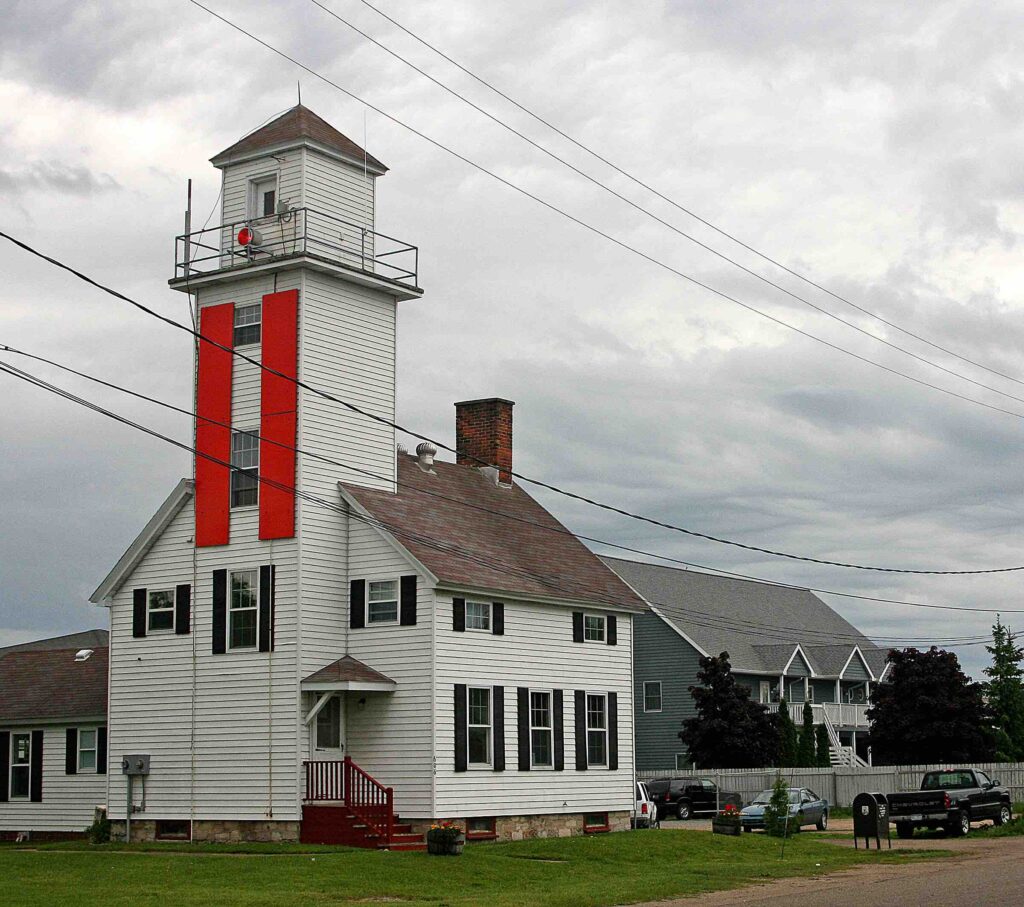
The lighthouse was built in 1880 and owned by GLLKA since 2004.
All activities, except the Glass Bottom Boat cruises, and yard sale purchases, are free and open to the public.
* * *
This Massachusetts Airbnb comes with the historic Wings Neck Lighthouse and a gorgeous private beach
Sometimes on vacation, all you want to do is get as far away from the rest of the world as possible. If that’s the type of trip you’re after, then consider booking Wings Neck, an Airbnb in Buzzards Bay, Massachusetts. It comes not only with a private beach but its own lighthouse too.
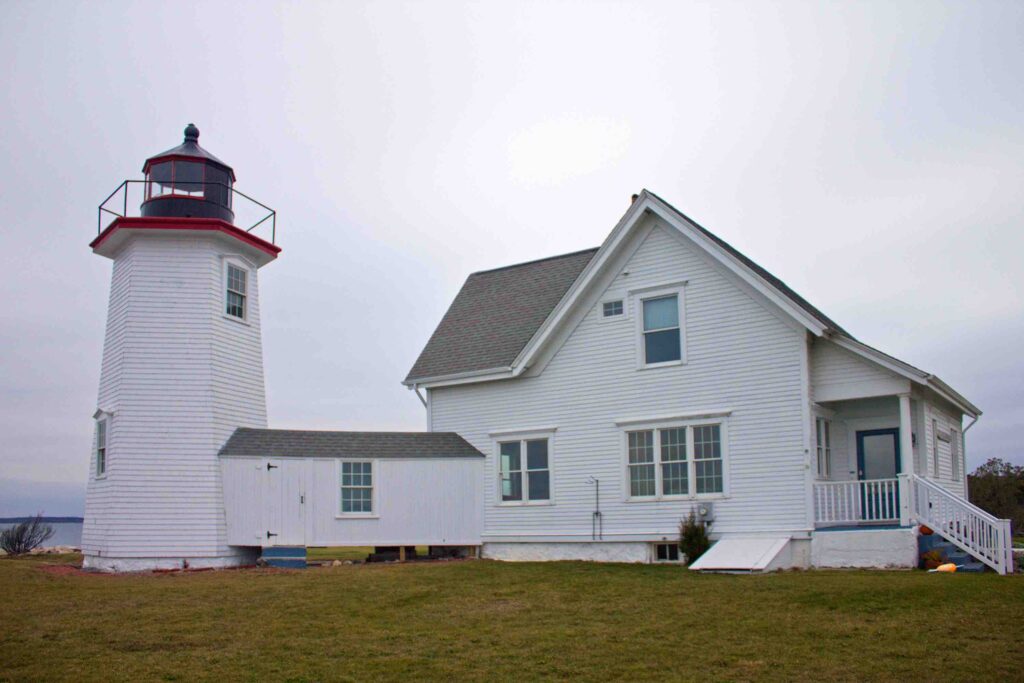
“Once in a lifetime experience to stay in a Lighthouse,” the Airbnb listing reads. “Historic, unique, and charming but with all of the conveniences that make a great vacation.”
* * *
The Lighthouse Way: Walking Spain’s ‘other’ camino
The narrow path weaved along the side of a vertiginous promontory carpeted with ferns and the occasional cluster of buttercups and purple hollyhocks. Wispy tendrils of fog dissolved, and the June sunshine warmed my back as I stood on a wind-sculpted granite boulder and peered into the Atlantic Ocean’s cobalt depths. The cries of gulls mixed with the sound of waves crashing against the rocks, releasing cascades of salt-charged spray. I could still see the fingernail outline of the creamy beach we’d traversed earlier, where plovers scuttled from the incoming tide.
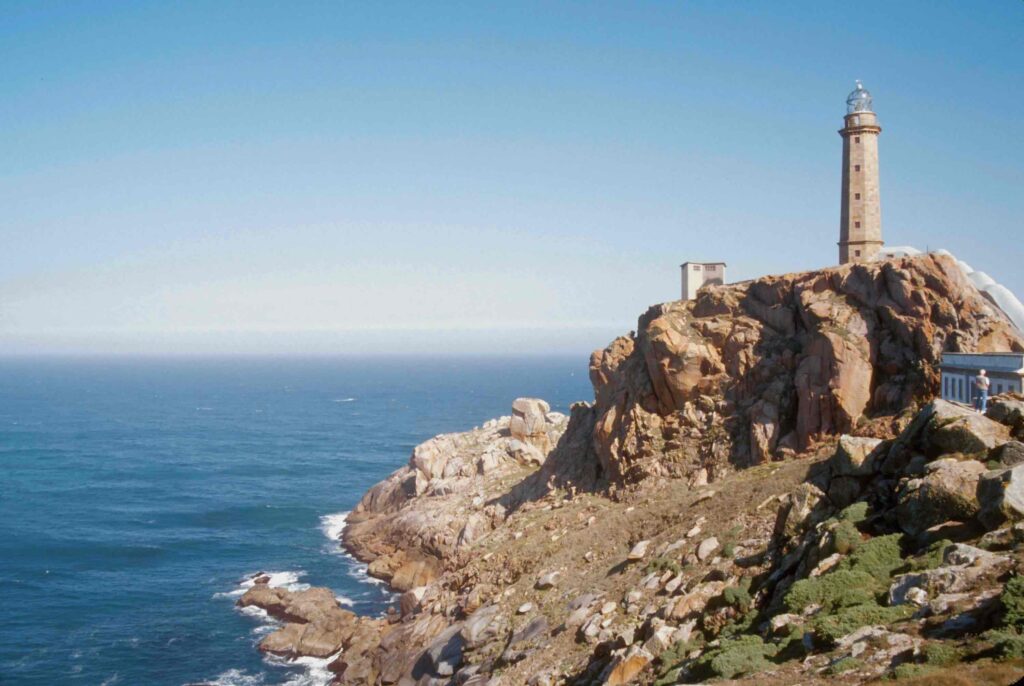
Once in a while, I discover a place so surprising, so unspoiled that it’s conflicting to write about it. What if the article helps tip the scale between the unknown and inundated? The Camino dos Faros, or Lighthouse Way, along the north-west tip of Spain in Galicia is such a place.
* * *
Iconic Marshall Point Maine lighthouse shines again after damaging lightning strike
A popular Maine lighthouse that was featured in the movie “Forrest Gump” has been restored after the light was extinguished by a lightning strike last month.
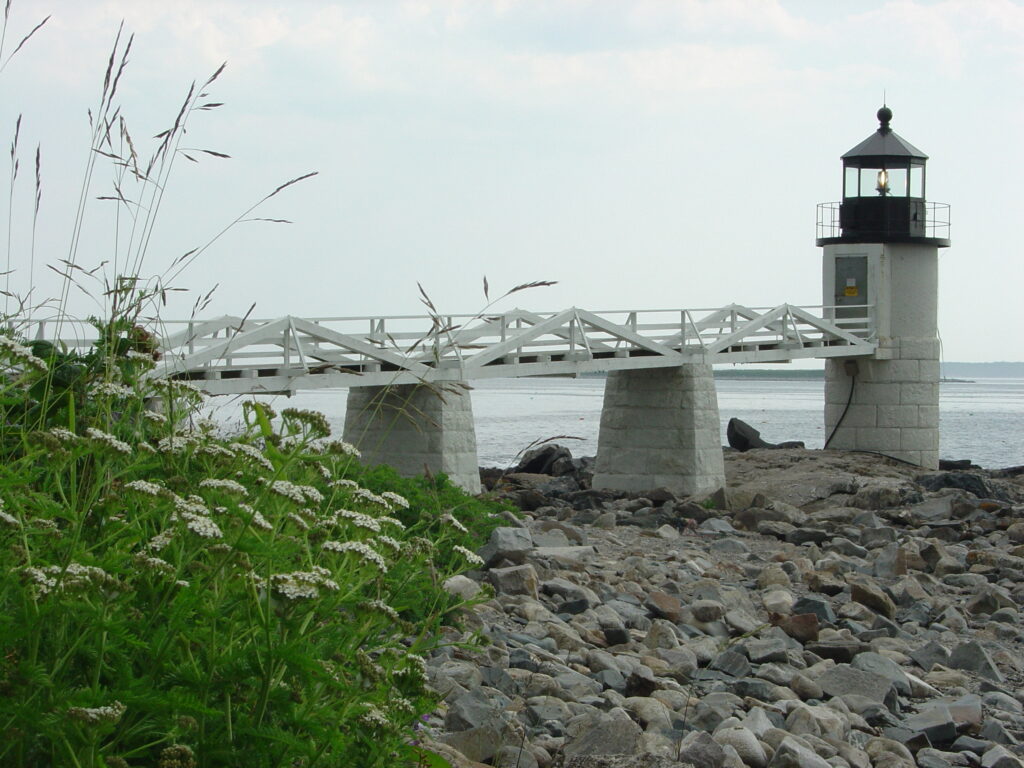
Marshall Point Lighthouse in Port Clyde was struck by lightning on July 27.
Diane Heath, who lives at the lightkeeper’s house, said the lightning hit the lightning rod, frying the light, foghorn and all associated circuits.
* * *
Western Nebraska’s only lighthouse
There are a lot of rivers and lakes in Nebraska, but there has never been much need for lighthouses to help ships navigate those waters.
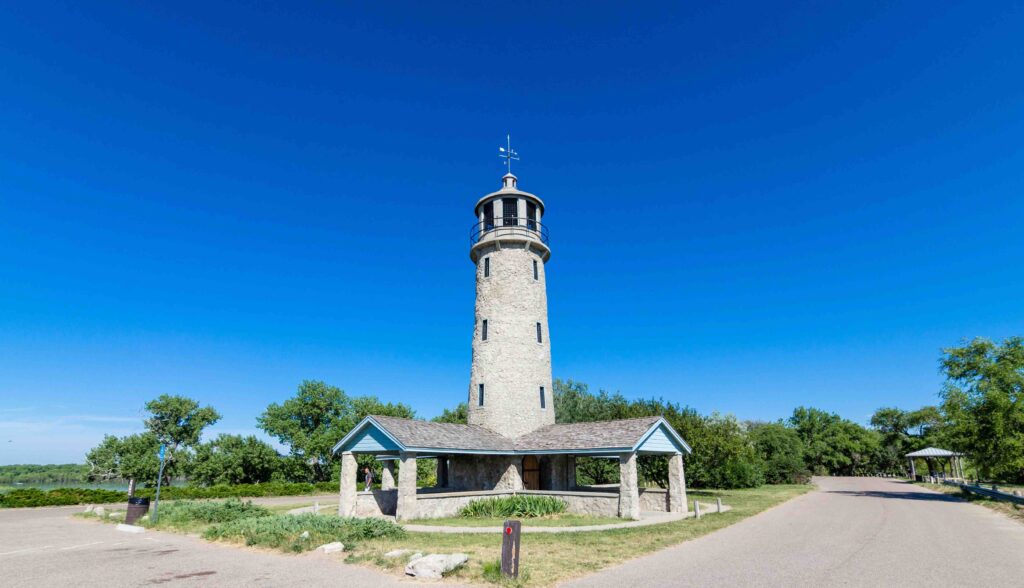
That didn’t stop the Veterans Conservation Corps (VCC) Camp BR-1 from building an unusual 55-foot-tall, four-story simulated lighthouse that stands at Lake Minatare State Recreation Area northeast of Scottsbluff.
* * *
Why Newport, OR has two lighthouses
People often wonder why Newport has two lighthouses — Yaquina Head and Yaquina Bay – so close together at roughly 3.5 miles apart by sea. The answer is simple, but it’s not the oft-repeated falsehood that one of them was built in the wrong location. Rather, it’s an early example of political maneuvering.
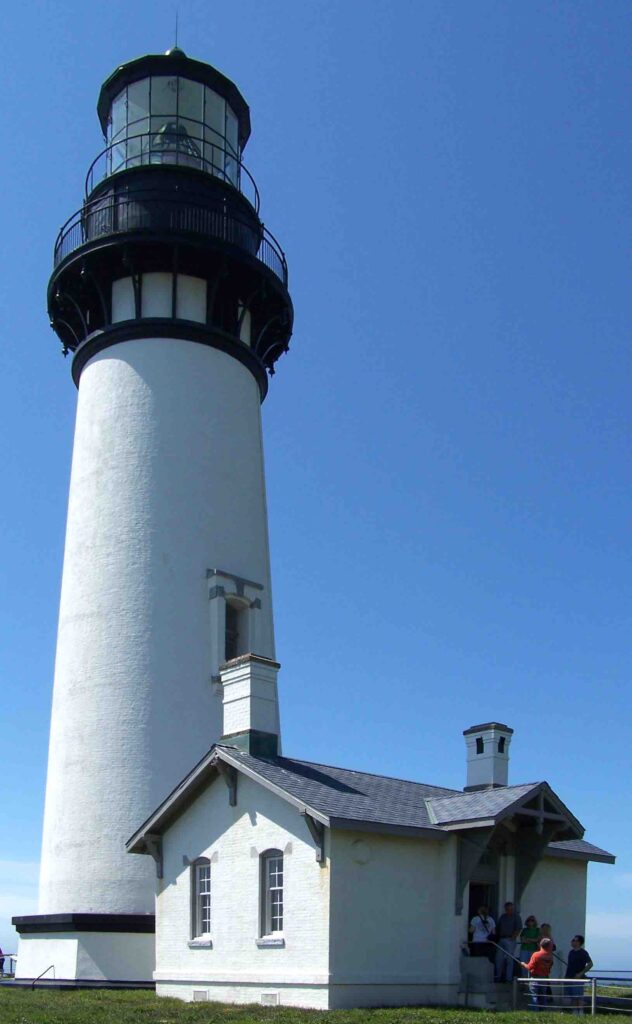
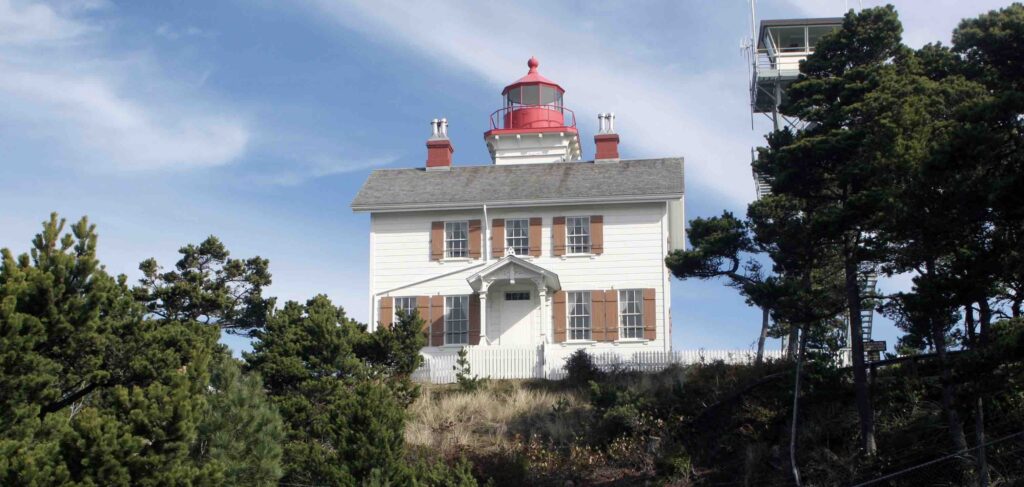
Plans for the lighthouse known today as the Yaquina Head Lighthouse were already in the works, but not happening fast enough for mid and southern Willamette Valley farmers and ranchers who were trying to get their goods to market faster in the mid 1800s, said Katherine Fuller, education specialist. Prior to the installation of lighthouses, ships stopped moving at night, which added to the time it took to get goods to market. Goods from the Willamette Valley were additionally delayed, transported first up the Willamette River and then down the Columbia and onto ships bound for San Francisco. “Politicians representing these folks pushed for a shortcut,” Fuller said.
* * *
U.S. Lighthouse Society News is produced by the U.S. Lighthouse Society to support lighthouse preservation, history, education and research.
If you have items of interest to the lighthouse community and its supporters, please email them to Jeremy D’Entremont at Jeremy@uslhs.org

